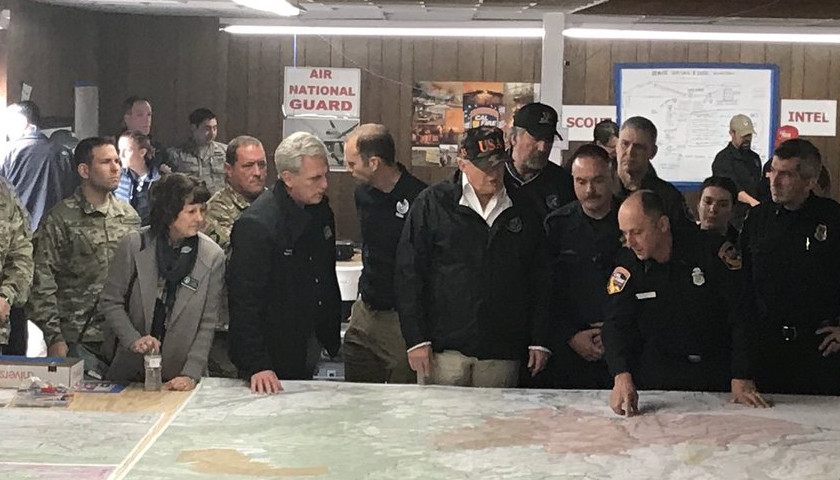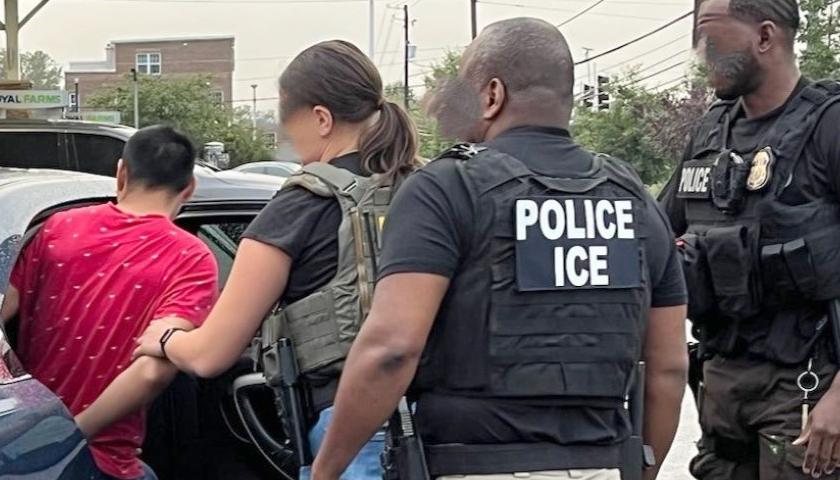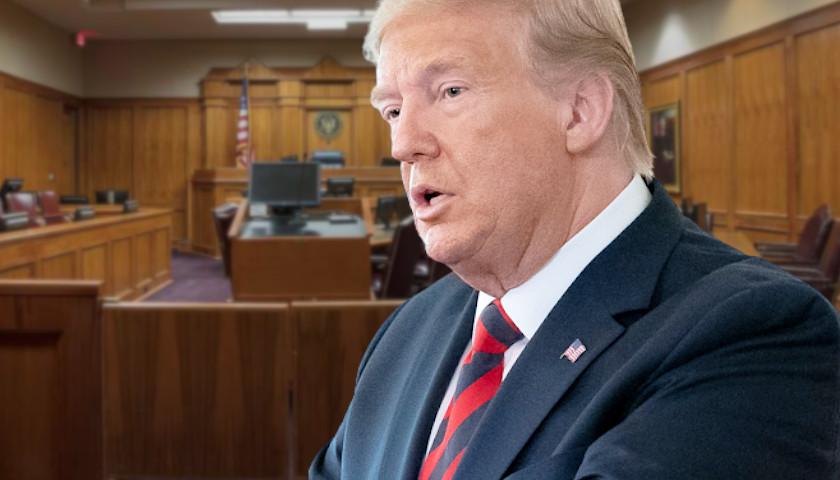Forensic recovery teams searched for more victims in the charred wreckage of the northern California town of Paradise on Saturday as the number of people listed as missing in the state’s deadliest wildfire topped 1,000.
President Donald Trump visited the devastated small community in the Sierra foothills, 175 miles (280 km) north of San Francisco, where authorities say the remains of at least 71people have been recovered.
Paradise was home to nearly 27,000 residents before it was largely incinerated by the blaze on the night of Nov. 8.
President Trump in Paradise, California. https://t.co/LLNPBBf8T1
— Dan Scavino Jr. Archived (@Scavino45) November 17, 2018
“Nobody could have thought this would ever happen,” Trump told reporters amid the charred wreckage of the town’s Skyway Villa Mobile Home and RV Park.
“This is very sad to see. As far as the lives are concerned, nobody knows quite yet,” Trump said. “Right now we want to take care of the people who have been so badly hurt.”
He was flanked by California Governor Jerry Brown and Governor-elect Gavin Newsom. Brown said the federal government was doing what it needed to do, including supporting first responders and helping with clean-up and search for victims.
The disaster already ranks among the deadliest U.S. wildfires since the turn of the last century. Eighty-seven people perished in the Big Burn firestorm that swept the Northern Rockies in August of 1910. Minnesota’s Cloquet Fire in October of 1918 killed 450 people.
Trump has blamed the recent spate of fires on forest mismanagement, and he said he discussed the issue with Brown and Newsom on the ride into Paradise.
“I don’t think we’ll have this again to this extent,” Trump said of the fire. “Hopefully this is going to be the last of these because this was a really, really bad one.”
Authorities attribute the high death toll from the blaze -dubbed “Camp Fire” – partly to the speed with which flames raced through the town with little warning, driven by howling winds and fueled by drought-desiccated scrub and trees.
More than a week later, firefighters have managed to carve containment lines around 55 percent of the blaze’s perimeter.
The fire covered 148,000 acres (60,000 hectares), fire officials said.
Besides the toll on human life, property losses from the blaze make it the most destructive in California history, posing the additional challenge of providing long-term shelter for many thousands of displaced residents.
Evacuees
With more than 9,700 homes up in smoke, many refugees have taken up temporary residence with friends and family, while others have pitched tents or were camping out of their vehicles.
At least 1,100 evacuees were being housed in 14emergencyshelters set up in churches, schools and community centers around the region, with a total of more than 47,000 people remaining under evacuation orders, authorities said.
Several shelters are full and, although authorities say they still have space for everyone, hundreds of people have been camping in tents and cars in the area.
Search teams with cadaver dogs have combed through rubble-strewn expanses of burned-out neighborhoods looking for bodies.
On Friday night, Butte County Sheriff Kory Honea said the remains of eight more fire victims were recovered during the day, bringing the death toll to 71.
Honea said the total roster of people unaccounted for had swelled to 1,011 – more than triple the number counted as missing on Thursday afternoon.
“This is a dynamic list,” Honea told reporters, saying it was compiled from “raw data” that likely included some duplications or multiple spellings of names.
Honea bristled when asked whether many of those listed at this point, more than a week after the disaster, were expected to end up either deceased or declared missing and presumed dead.
“I don’t think it’s appropriate for any of us to sit and speculate about what the future holds,” he said. As of Friday,he said, 329 individuals previously reported missing had turned up alive.
List of the missing
The names were being compiled from information received from a special hotline, along with email reports and a review ofemergency-911 calls that came in on the first night of the fire, Honea said.
Some listed have likely survived but not yet notified familyor authorities. Others may not have been immediately listed because of delays in reporting them.
Weather conditions have since turned more to fire fighters’ favor, though strong, gusty winds and lower humidity were expected to return late Saturday through early Sunday ahead of rain forecast for midweek.
The outbreak of Camp Fire coincided with a series of smaller blazes in Southern California, most notably the Woolsey Fire, which is linked to three fatalities and has destroyed at least500 structures near the Malibu coast west of Los Angeles. It was78 percent contained on Friday night.
Scientists have said the growing frequency and intensity of wild fires in California and elsewhere across the West are largely attributable to prolonged drought that is symptomatic of climate change.
The precise causes of the Camp and Woolsey Fires were under investigation, but electric utilities have reported equipment problems in the vicinity of both blazes around the time they erupted.






The problem is NOT “climate change” as this article puts forth. The problem is mismanagement of forests. Even within the ranks of the Federal agencies delegated with the responsibility of managing public land, there have been bitter internal conflicts between the professional foresters and the more recent influx of “environmental studies” graduates who are now driving policy. Professional foresters, public and private, know all too well that to reduce the threat of wildfire, you need to clear the underbrush and remove dead standing wood. The “environmental studies” crowd argue that this practice removes habitat for threatened and endangered species, so the “slash” and “snags” are left in place, dry out, and provide not only fuel, but infrastructure for fire to spread.
Now, what does President Trump know from wildfires? Only what he is told. He was born and raised in highly urbanized environments. However, his Secretary of Interior, Ryan Zinke, is a 5th generation Montanan and grew up in logging country. His undergraduate degree is in geology, not business administration. Sec. Zinke has correctly identified the problem and that is what he has advised President Trump and the President has wisely listened.
And that is why Gov. Brown and Gov.-elect Newsome are in an uproar. They are part of the ecofascist crowd that labels its fascism as “public-private partnerships.” Nonsense, it’s fascism as classically defined – the manipulation of public policy to further the interests of private concerns – such as Centers for Biological Diversity, Sierra Club, Greenpeace, and so on. The large forestry product companies also benefit by squeezing out independent operators, so they too turn a blind eye to any policy that drives the independent operator out of business.
This same conflict can be found in removing dams and prohibiting ponds versus managing the water resource. The “drought” that this article notes is not entirely the result of natural weather patterns, but also the manufactured result of destroying water infrastructure. Ironically, Gov. Brown’s father, also a California Governor, built his political empire based on providing California with the water infrastructure needed to support a larger human population.
I am surprised that the TN Star let itself become an unwitting accomplice in undermining President Trump and his Interior Secretary by not scrutinizing the underlying message.